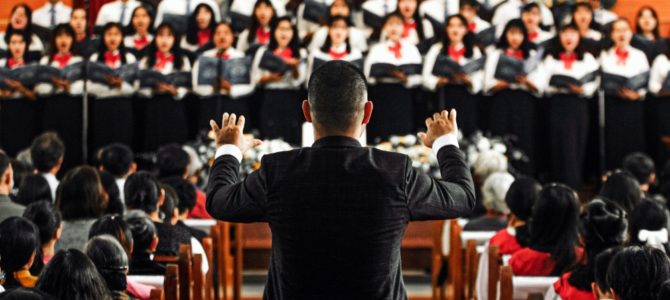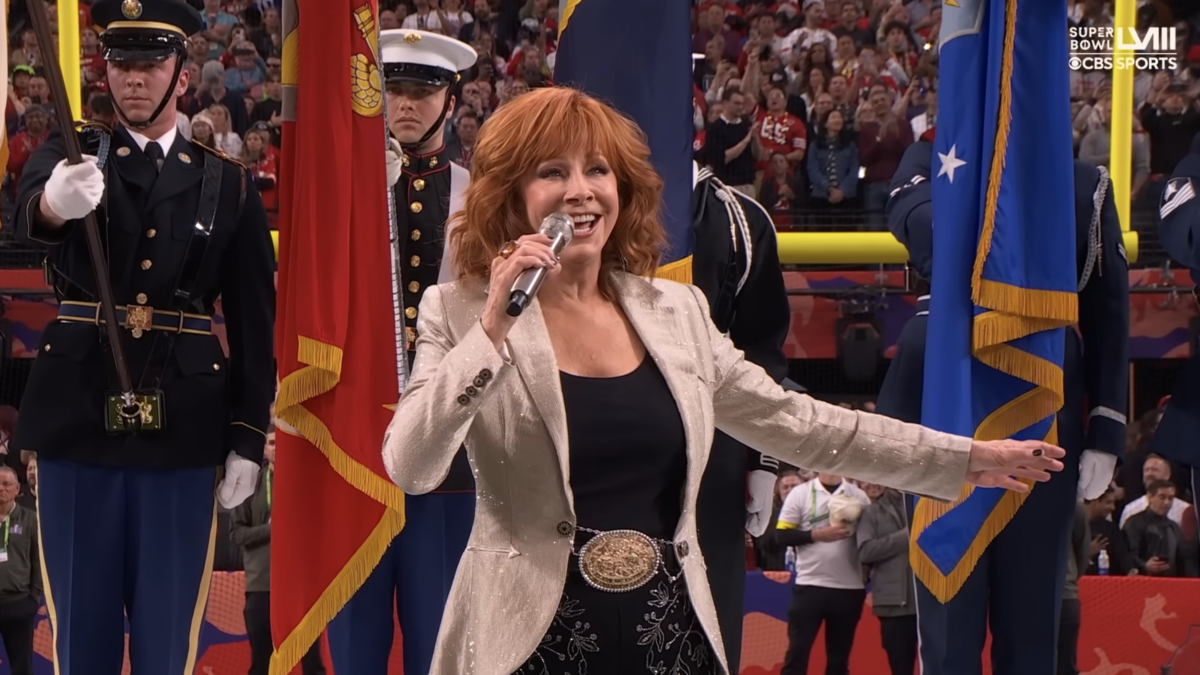
The Monday before Christmas, Neil Diamond posted a “global singalong” of his hit, “Sweet Caroline,” on YouTube. With lyrics about the joy of “reaching out” and “touching hands” with another human being, the song is a perfect — if ironic — anthem for a world that’s grown weary of the imposed isolation of 2020.
Earlier in December, Capitol Records (Diamond’s label) invited his fans to record themselves singing, playing, and dancing to the 1969 classic. Thousands responded, and the resulting mash-up is a feel-good, toe-tapping triumph that will put a smile on your face.
Who doesn’t love “Sweet Caroline”? I can still hear the marching band playing it at Friday night football games in my home state of Texas.
Virtual Music Has Nothing On Live Performances
Yet, as fun as virtual efforts may sometimes be, when they turn into the rule, the fun fades. Unfortunately, over the last nine months, virtual music-making has been the rule, as churches, concert halls, theaters, and rehearsal spaces around the world have gone silent or been severely limited due to COVID-19. Restrictions have varied from place to place, but most people have had their musical activities curtailed due to concerns about transmitting the virus.
In some areas of the country, worshipers have been forbidden from singing in church. In others, they have been allowed to sing in reduced numbers. Because of the shutdowns, music lessons and classes have moved from being held in-person to being held largely online. Singers and musicians have had to cancel live performances and rehearse and perform via Zoom. Perhaps worst of all, audiences have been deprived of the joy of attending live concerts and theatrical productions.
While some restrictions have been eased as vaccines become available, “hot spots” calm down, and more is learned about how to minimize risk, we’re still a long way from returning to any degree of normalcy in the ways we gather to make music. Many professional musicians are watching their livelihoods disappear, and for the first time in more than 100 years, the annual broadcast of “A Festival of Nine Lessons and Carols” from King’s College in Cambridge was recorded in an empty chapel ahead of time instead of being broadcast live on Christmas Eve with a full congregation of singers.
Through all of this, musicians around the world have been doing their valiant best to keep things going during the shutdowns. Although 21st-century technology has been indispensable to that effort, the virtual substitutes are a far cry from the real thing. In the age of recorded music, people still want to attend live performances. There’s an energy and authenticity in live music that a recording simply doesn’t have.
It’s also why, although there’s probably a recorded version of just about any piece of music you might want to hear, people still learn to play instruments, join amateur musical groups, and sing in church rather than just pushing a play button.
Music isn’t merely a commodity to be consumed, but a means by which humans express themselves and create a community. Listening to a recording or watching a live stream simply can’t compare to singing with flesh-and-blood people in a church service or listening to a choir or orchestra as it makes musical magic right in front of you.
It’s a tragic irony of the COVID-19 pandemic that the human contact we so desperately need to help us through times of illness and difficulty is being denied because of its ability to harm us. The loss of shared musical activity is just one way that is happening.
COVID-19 Has Hit Singing Hard
Choral singing has been especially hampered by the shutdowns, and studies are ongoing about the conditions under which it can transmit the virus. To its credit, the American Choral Directors Association is continually monitoring the research and updating association members with the most recent findings, which will tell you more than you ever wanted to know about the differences between “particles,” “droplets,” and “aerosols.”
Depending on their situations, some vocal choirs have returned to in-person rehearsals and concerts while employing social distancing, mask-wearing, and outdoor venues, while others are still rehearsing entirely online and substituting virtual concerts for live ones.
Neither option is ideal. Can you imagine trying to direct a choir when you can’t see the faces of your singers or when they’re spread out with their sound dissipated over a huge area? It’s hard to envision leading a successful vocal rehearsal online, where the sound can only go one direction at a time and no one can hear the full group, least of all the music director.
I spent many years working as a piano accompanist for vocal choirs, and choral directors tell me they are extremely worried about the effects of coronavirus restrictions not only on the long-term viability of their programs but on their singers. Much of the well-documented psychological, emotional, and physical benefits of singing with a choir are lost in an online setting. Furthermore, as the shutdowns drag on, some parents are pulling their children from any extracurricular activity that extends the children’s already-lengthy screen time.
“Fourteen days to slow the spread,” followed by “30 days to slow the spread,” has turned into “Nine months and counting” with no end in sight. As choral and instrumental programs struggle to survive, music teachers are understandably wondering if they’ll have any ensembles to return to when all of this is finally over.
Human Beings Need Music
Despite the seemingly endless roadblocks, the varied efforts of musicians and singers around the world to keep the music going are a testament to the importance of music in all our lives. From celebrities live streaming in their living rooms to choirs presenting virtual concerts to symphony orchestras giving outdoor performances to Broadway stars and everyday people singing out their windows during the lockdown, the determination to continue making music in the face of restrictions gives hope for our ability to weather this storm.
Sometimes it takes losing something to be reminded of how important it is, and if the musical deprivation of 2020 leads to a renaissance of appreciation for group and amateur music, perhaps that will be a pandemic “silver lining.” If the opposite occurs, however, and the events of 2020 result in the further decline of average people participating in music for the simple joy of it, such a reality would mark yet another casualty of this hellish year.
The best thing about the “Sweet Caroline” singalong is the sight of everyday people with everyday skills having a great time making music. But even better is 17 middle-school kids in Wisconsin, confined to their homes early in the shutdown, singing about how Christ is holding them fast during this challenging time:
God bless the teacher who made this happen. It’s obvious how much these young people want to sing. But they should not have to do it sitting in their bedrooms while they sing a solo into a computer microphone.
Rather, they should be in a stuffy, dusty rehearsal room at their school, acting goofy and getting shushed by their teacher before falling silent and fixing their eyes on him as he raises his hands. They should be able to hear not just their own voice being raised in song, but the voices of their fellow students blending with their own as they make a joyful noise together.
For the sake of young people like these, and for our own sake, let us fervently pray that one day soon, we can all get back to singing and playing, shoulder to shoulder, unmasked, in our respective churches and rehearsal halls. Until then, let us all do our part to keep the music alive during this time of deprivation.
Support your local arts organizations, musicians, and teachers in whatever way you can. Pick up that instrument you used to play (or a new one) and recapture the joy of playing it. Sing wherever and whenever you can. Resolve not to let a pandemic take away your song.
And look with hope for an end to the things that keep us apart, that we might again physically gather — in our homes, churches, and communities — to share in God’s gift of music.









